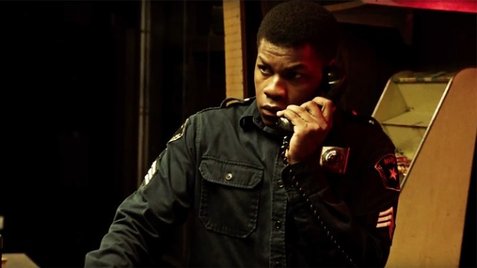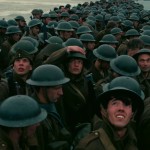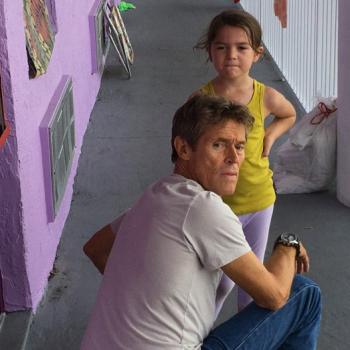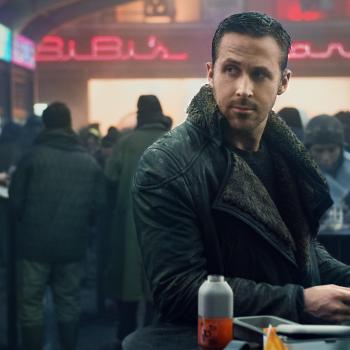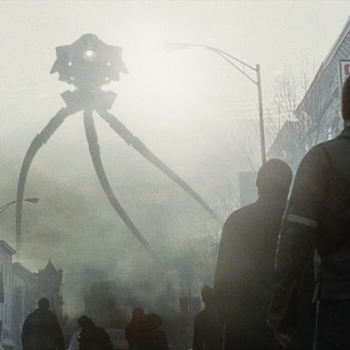City on fire
Following an animated prologue detailing instances of unrest across the country, the film opens with the raid of an illegal Detroit nightclub in late July 1967. At this point, tensions between the police force — overwhelmingly white and known for its aggression — and the city’s largely black residency are at a boiling point. There are arrests, shattered bottles and a tossed Molotov cocktail. It’s not long before Detroit is burning, the military rolls in to quell the unrest and the uprising plays out on national news.
But the film isn’t a retelling of the events leading up to the riots that engulfed the town for six days. Rather, Bigelow and Boal narrow in on one particularly notorious event that took place several days into the riots, following several characters whom fate brings together during one brutal, nightmarish night at the Algiers motel. In focusing on this smaller story — one that has been forgotten by many Detroiters and is unknown to most outside the city — the filmmakers immerse viewers in the heart of the conflict, giving a taste of the racial terror and violence that made Detroit’s eruption inevitable.
Larry Reed (Algee Smith) is the frontman of the up-and-coming local band The Dramatics. As the city descends into chaos, the group is readying for their big showcase. But the unrest outside forces police to shut down the show just as The Dramatics take the stage. While the other band members head to the safety of their homes, Larry and his friend Fred (Jacob Latimore) take refuge at the Aligers, bunking up in the facility’s annex, where they meet the acquaintance of two young white girls (Hannah Murray and Kaitlyn Dever) who have headed to Detroit from Ohio.
Not long after, a prank involving a starter pistol attracts the attention of nearby police and National Guardsmen. This includes a group of patrolmen led by a young cop named Krauss (Will Poulter) who has his own legal worries; earlier in the day, he shot and killed a looter running away from him. Krauss and his two cronies enter the hotel, shoot and kill an unarmed man, and then hold Larry, his friends and several others hostage. They need to control the situation, so they yell, beat, and threaten. Frustrated, angry and drunk with power, they hurl epithets, accuse the white girls of being whores for hanging around black men, and goad their captors to take a run at them so they have an excuse to shoot. When they need a confession, they take several of the men into other rooms and fire a gun, pretending to murder them to coerce the others into saying what they want to hear. The only thing keeping them from becoming completely unhinged seems to be the presence of black security guard Melvin Dismukes (John Boyega), who’s come by to help keep the peace but seems hesitant to get too involved. If it seems awkward that I keep mentioning color, that’s the point: everything here is motivated by race. White flight is what contributed to Detroit’s decline, systematic racism turned the city into a powder keg, and emasculation and prejudice put an overwhelmingly white police force at odds with a city whose population was largely composed of minorities. Race is key to the conflict in Detroit (and in “Detroit”), and the film never backs down from the discomfort and tension that seethes through every scene.
Bigelow and Boal’s most recent collaborations have taken on some of the biggest political events and crises in recent U.S. history. But while “The Hurt Locker” and “Zero Dark Thirty” are both essential viewing for anyone looking to learn more about America’s post-9/11 military operations, the way the duo filters the story through one character — be it an adrenaline-junkie bomb tech or an obsessed CIA analyst — keeps the tales grounded, relatable and emotional. With “Detroit,” they’re working on a much larger canvas, and their attempt to weave the story through different viewpoints is at times meandering and unfocused. For the first half-hour, there isn’t really a main character to follow, just snippets of unrest to build context and heighten the tension. These scenes are impeccably well-filmed, with production designer Jeremy Hindle re-creating the grimy, sweaty streets of 1960s Detroit and cinematographer Barry Ackroyd’s handheld cameras giving the film an immediacy that fits perfectly with the news footage that’s spliced in. Those looking for the story of the Detroit riots in these early moments won’t find a discussion of the politics and social factors that led to the uprisings, but rather an immersion into a city coming apart at the seams. It’s effective filmmaking, even if it often seems untethered.
The siege on the Algiers takes up a significant chunk of the run time and is one of the most visceral pieces of filmmaking Bigelow has ever delivered. She doesn’t hold back, creating a claustrophobic, relentless film, rubbing our faces in the terrifying reality with no room to breathe and no way to escape. It’s an ugly, lengthy passage that only gets more unbearable as it continues. Where most films tackling racism build to a moral victory or some bit of hope, “Detroit” doesn’t offer happy endings. It’s a despairing bit of American tragedy that refuses to back off its intensity or give false uplift. Even when the tension at the Algiers dissipates, the film has more gut punches in store when it turns into a tale of cover up, corruption and miscarriages of justice. It’s a two-and-a-half-hour piece of social horror that’s every bit as unshakeable as “Get Out,” and much more brutal. It wants to disturb and provoke, and it succeeds.
Upping the intensity are masterful performances. Poulter is an actor I’ve enjoyed watching for the better part of a decade, since his debut in the delightful “Son of Rambow.” He’s become an actor with real depth and range, and it’s to his credit that he manages to find a bit of soul in Krauss, a character composited from other real-life officers but who reads on the page as Racist Cop #1. Poulter has a quiet, creepy intensity and unnerving stare that speaks volumes; he’s a monster in this film, and his calculated, terrifying performance keeps the character from turning into a caricature. Boyega, so charismatic and likable in “Star Wars: The Force Awakens” channels a bit of his “Attack the Block” somberness as a good man trying to to his best but unsure how involved to become. As a veteran staying at the Algiers, Anthony Mackie is fierce and effective. Bigelow puts her cast through paces, demanding them to endure intense mental and physical violence, and they all deliver. The film’s power is due in large part to watching likable characters endure unimaginable brutality and cruelty, and there’s never a moment where they flinch or put up their guard. Everyone is dialed-in here, and “Detroit” has one of the year’s best ensembles.
I’ve spent the better part of a week wrestling whether or not the brutality on display is too much. Because on the one hand, the film rubs our noses in ugliness. And while Bigelow goes to great lengths to show that not all police were racist monsters, Krauss sometimes feels one-dimensional and underwritten; his personality is that he’s a monster, and his actions are horrifying and extreme. On the other hand, the brutality and systematic racism on display don’t look or sound much different from what I see when I turn on the TV lately — one scene, in which a character describes what it’s like to be a black man pulled over by police, echoes conversations I’ve overheard in real life. Just because it’s ugly doesn’t mean it’s not true. And as a white man, I have to confess that it might all feel slightly false to me because I haven’t had to endure it. It’s a different situation when I’m pulled over by a police officer; perhaps it’s not up to me to judge whether the racism on display is too much, only if it the depiction is effective. And it definitely is; Bigelow’s a master at drawing out tension and manipulating emotions, and she turns “Detroit” into one of the most harrowing film experiences of the year.

